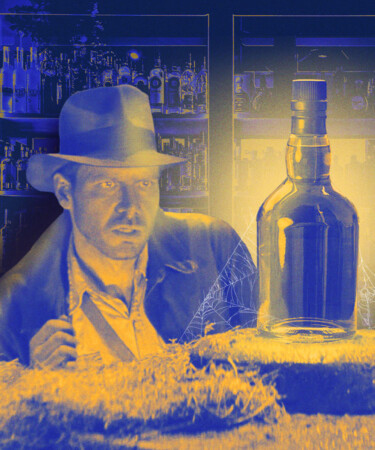From bottles of Pappy Van Winkle to vintage expressions of Wild Turkey and Old Grand-Dad, there is no shortage of valuable bourbons that aficionados are thirsty to get their hands on. When it comes to describing the attributes of a highly sought-after whiskey, one may be used to hearing the terms “rare” or “retired label,” but may be more surprised to see the word “dusty” thrown in the mix. Dusty? Does that mean the spirit is going to taste dusty, or is that it belongs to a larger, more encompassing category of bourbon?
To learn more about “dusties,” VinePair tapped whiskey pro Tim Heuisler, global small-batch brand ambassador for Beam Suntory, including brands Basil Hayden, Knob Creek, and Booker’s Bourbon.
“‘Dusties’ are vintage or discontinued whiskeys that have been sitting on retail shelves — or behind a bar — for years ‘collecting dust,’” explains Heuisler. While there has been a lot of debate in the community over how old a bottle has to be in order to breach “dusty” territory, Heuisler argues that he would not consider a specific bottle a dusty unless it passes the 10- to 15-year age mark and the bottle is still sealed.
As for who coined the term, Heuisler can’t be sure, though he does recall the first time he heard it used to describe whiskey. “It was one of those ‘ah-ha’ moments for me,” he says. “I quickly realized that the bottle I had brought along to the party did not meet the ‘dusty’ criteria. Talk about feeling out of place with a group of whiskey aficionados.”
Because a bottle should be at least over a decade old — and remain sealed — in order to be considered a “dusty” whiskey, it’s safe to say that coming across one is a rarity, and Heuisler says you should always pick it up. “If you find one sitting on the shelf of a liquor store, you’re hopefully paying the original price — winning!” he says. But he adds, “The secondary market for these bottles is less kind. Buyer be warned.” The unkind nature Heuisler refers to includes auctions and the more illicit operation of previous buyers reselling at gouged prices, which is illegal. Many bourbons resold on the secondary market exceed $1,000, with one of the most expensive bourbons ever sold, Old Rip Van Winkle 25 Year Old, reaching an astonishing $55,000.
According to Heuisler, some of the most sought-after “dusties” include bottlings or vintages from now-closed distilleries, like Old Grand-Dad produced at the now-defunct Frankfort, Ky., site. However, he explains that as more and more whiskeys are produced, the whiskeys of today will eventually become “dusties” and things will change.
“Whiskey enthusiasts today will even stock up on their favorites that are going out of production to be enjoyed years down the road,” he says. “I do not like to think of my collection at home as collecting dust, but I suppose some of those bottles are going to do exactly that.”
